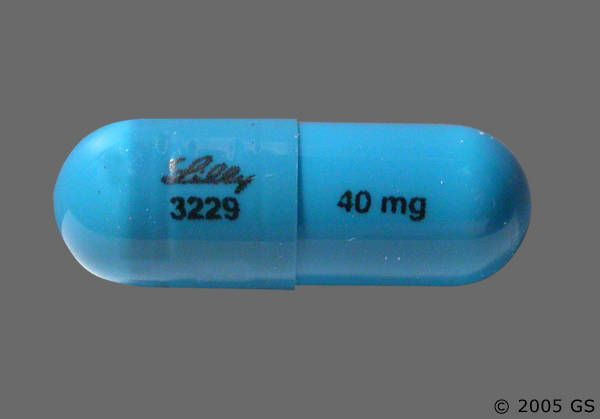Atomexetine | Strattera
STRATTERA is indicated for the treatment of Attention-Deficit/Hyperactivity Disorder (ADHD). The efficacy of STRATTERA Capsules was established in seven clinical trials in outpatients with ADHD: four 6 to 9-week 19 trials in pediatric patients (ages 6 to 18), two 10-week trial in adults, and one maintenance trial in pediatrics (ages 6 to 15) [see 20 Clinical Studies (14)].
STRATTERA is indicated as an integral part of a total treatment program for ADHD that may include other measures (psychological, educational, social) for patients with this syndrome. Drug treatment may not be indicated for all patients with this syndrome. Drug treatment is not intended for use in the patient who exhibits symptoms secondary to environmental factors and/or other primary psychiatric disorders, including psychosis. Appropriate educational placement is essential in children and adolescents with this diagnosis and psychosocial intervention is often helpful. When remedial measures alone are insufficient, the decision to prescribe drug treatment medication will depend upon the physician’s assessment of the chronicity and severity of the patient’s symptoms.

Dosing of children and adolescents up to 70 kg body weight — STRATTERA should be initiated at a total daily dose of approximately 0.5 mg/kg and increased after a minimum of 3 days to a target total daily dose of approximately 1.2 mg/kg administered either as a single daily dose in the morning or as evenly divided doses in the morning and late afternoon/early evening. No additional benefit has been demonstrated for doses higher than 1.2 mg/kg/day [see Clinical Studies (14)]. The total daily dose in children and adolescents should not exceed 1.4 mg/kg or 100 mg, whichever is less.
Dosing of children and adolescents over 70 kg body weight and adults — STRATTERA should be initiated at a total daily dose of 40 mg and increased after a minimum of 3 days to a target total daily dose of approximately 80 mg administered either as a single daily dose in the morning or as evenly divided doses in the morning and late afternoon/early evening. After 2 to 4 additional weeks, the dose may be increased to a maximum of 100 mg in patients who have not achieved an optimal response. There are no data that support increased effectiveness at higher doses [see Clinical Studies (14)].
The maximum recommended total daily dose in children and adolescents over 70 kg and adults is 100 mg.
—–INDICATIONS AND USAGE—–
- See description above.
—–DOSAGE AND ADMINISTRATION—–
- See description above.
—–CONTRAINDICATIONS—–
- Hypersensitivity to atomoxetine or other constituents of product. (4.1)
- STRATTERA use within 2 weeks after discontinuing MAOI or other drugs that affect brain monoamine concentrations. (4.2, 7.1)
- Narrow Angle Glaucoma. (4.3)
- Pheochromocytoma or history of pheochromocytoma. (4.4)
—–WARNINGS & PRECAUTIONS—–
- Suicidal Ideation – Monitor for suicidality, clinical worsening, and unusual changes in behavior. (5.1)
- Severe Liver Injury – Should be discontinued and not restarted in patients with jaundice or laboratory evidence of liver injury. (5.2)
- Serious Cardiovascular Events – Sudden death, stroke and myocardial infarction have been reported in association with atomoxetine treatment. Patients should have a careful history and physical exam to assess for presence of cardiovascular disease. STRATTERA generally should not be used in children or adolescents with known serious structural cardiac abnormalities, cardiomyopathy, serious heart rhythm abnormalities, or other serious cardiac problems that may place them at increased vulnerability to its noradrenergic effects. Consideration should be given to not using STRATTERA in adults with clinically significant cardiac abnormalities. (5.3)
—–WARNINGS & PRECAUTIONS—–
- Emergent Cardiovascular Symptoms – Patients should undergo prompt cardiac evaluation. (5.3)
- Effects on Blood Pressure and Heart Rate – Can increase blood pressure and heart rate; orthostasis, syncope and Raynaud’s phenomenon may occur. Use with caution in patients with hypertension, tachycardia, or cardiovascular or cerebrovascular disease. (5.4)
- Emergent Psychotic or Manic Symptoms – Consider discontinuing treatment if such new symptoms occur. (5.5)
- Bipolar Disorder – Screen patients to avoid possible induction of a mixed/manic episode. (5.6)
- Aggressive behavior or hostility should be monitored. (5.7) • Possible allergic reactions, including anaphylactic reactions, angioneurotic edema, urticaria, and rash. (5.8)
- Effects on Urine Outflow – Urinary hesitancy and retention may occur. (5.9)
- Priapism – Prompt medical attention is required in the event of suspected priapism. (5.10, 17.5)
- Growth – Height and weight should be monitored in pediatric patients. (5.11)
- Concomitant Use of Potent CYP2D6 Inhibitors or Use in patients known to be CYP2D6 PMs – Dose adjustment of STRATTERA may be necessary. (5.13)
—–ADVERSE REACTIONS—–
Most common adverse reactions (≥5% and at least twice the incidence of placebo patients)
- Child and Adolescent Clinical Trials – Nausea, vomiting, fatigue, decreased appetite, abdominal pain, and somnolence. (6.1)
- Adult Clinical Trials – Constipation, dry mouth, nausea, fatigue, decreased appetite, insomnia, erectile dysfunction, urinary hesitation and/or urinary retention and/or dysuria, dysmenorrhea, and hot flush. (6.1)
—–DRUG INTERACTIONS—–
- Monoamine Oxidase Inhibitors. (4.2, 7.1)
- CYP2D6 Inhibitors – Concomitant use may increase atomoxetine steadystate plasma concentrations in EMs. (7.2)
- Pressor Agents – Possible effects on blood pressure. (7.3)
- Albuterol (or other beta2 agonists) – Action of albuterol on cardiovascular system can be potentiated. (7.4)
—–USE IN SPECIFIC POPULATIONS—–
- Pregnancy/Lactation – Pregnant or nursing women should not use unless potential benefit justifies potential risk to fetus or infant. (8.1, 8.3)
- Hepatic Insufficiency – Increased exposure (AUC) to atomoxetine than with normal subjects in EM subjects with moderate (Child-Pugh Class B) (2-fold increase) and severe (Child-Pugh Class C) (4-fold increase). (8.6)
- Renal Insufficiency – Higher systemic exposure to atomoxetine than healthy subjects for EM subjects with end stage renal disease – no difference when exposure corrected for mg/kg dose. (8.7)
- Patients with Concomitant Illness – Does not worsen tics in patients with ADHD and comorbid Tourette’s Disorder. (8.10)
- Patients with Concomitant Illness – Does not worsen anxiety in patients with ADHD and comorbid Anxiety Disorders. (8.10)

